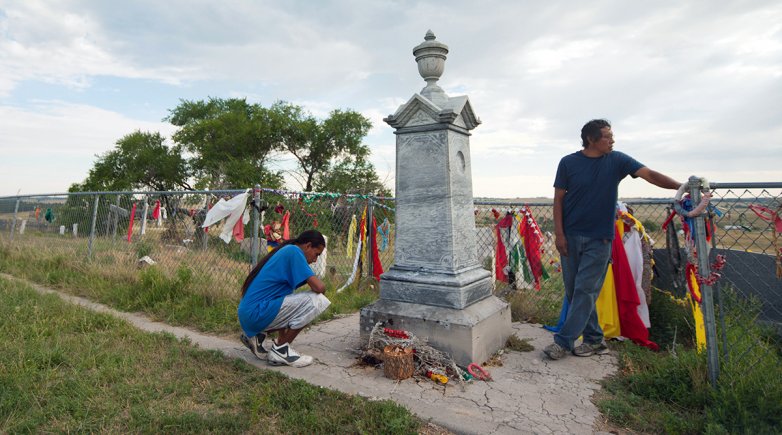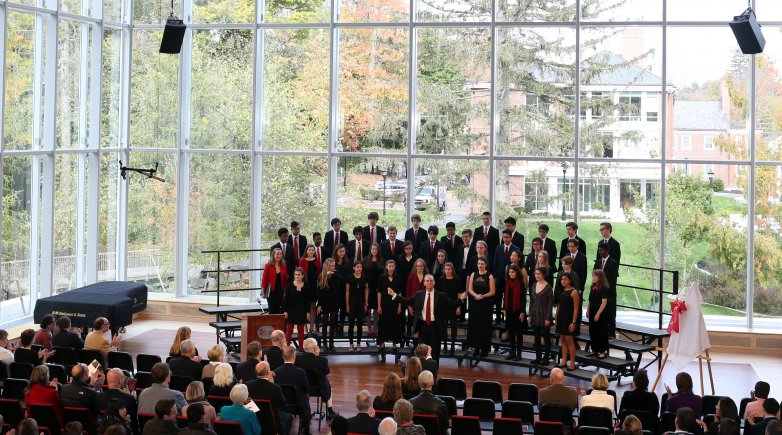Considering the weight of history
A visit to the Pine Ridge Indian Reservation in South Dakota inspires changes in the classroom.
Visitors to the Wounded Knee monument and burial grounds pay respect to the hundreds of Lakota people who lost their lives there.
Sitting at a Harkness table as she takes a break from planning on the first day of classes, History Instructor Betty Luther-Hillman recalls a recent visit to the burial grounds at Wounded Knee, which hold the remains of hundreds of Oglala Lakota men, women and children who were slain there by the United States Cavalry in 1890.
The site now rests on the Pine Ridge Indian Reservation, bordering the badlands of South Dakota, in rocky, barren terrain. Running her hands through her close-cropped hair, Luther-Hillman recalls her almost visceral response to standing in the spot where so many Lakota lost their lives. “That experience was really powerful to me,” she says. “We talk about Wounded Knee, we read about all of the people who were killed there, and we read about the baby who survived. You can read all of those facts in a book, but you really feel it when you’re on the reservation.”
Luther-Hillman visited Wounded Knee in August, when she and three of her colleagues (English Instructor Erica Plouffe Lazure, Physical Education Instructor Melissa Pacific and Associate Athletic Trainer Kalya Medina) volunteered with Re-Member, a nonprofit organization that works to improve the lives of the Oglala Lakota living on the Pine Ridge reservation, one of the starkest examples of rural poverty in the nation. During their one-week stay at the Re-Member facility, the Exeter faculty members helped work on construction projects for families in need and visited sites on the reservation such as Wounded Knee, Oglala Lakota College, Badlands National Park and the Red Cloud Indian School. Through nightly guest lectures from elders of the Oglala Lakota Nation, the four women also received a crash course in the complex tangle of economic, historical, political and cultural contexts that help shape the lives of the Lakota today.
The visit to Pine Ridge was a powerful one for the Exeter employees, who are working to incorporate some of the insights it gave them, along with the questions it raised, into their work at the Academy — and hoping to organize subsequent trips for faculty, staff and eventually, students.



